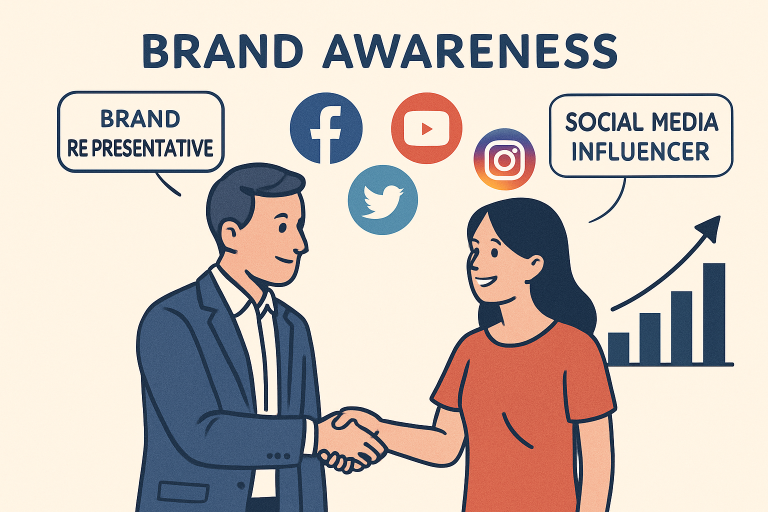Key Takeaways
- Discover why influencer collaborations continue to grow as a marketing trend.
- Learn how to identify the right influencers for impactful partnerships.
- Understand the challenges and ethics of influencer marketing.
- Explore practical tips for brands and creators to build authentic relationships.
- Review the latest statistics and case studies demonstrating influencer effectiveness.
- Stay informed about important FTC guidelines for influencer advertising.
- Know how to measure the success of influencer campaigns.
Introduction: Influencer Collaborations and Their Place in Modern Marketing
In the digital era, the influence of individuals on social media has fundamentally changed the landscape of brand marketing. Influencer collaborations have emerged as a highly effective method for businesses to increase brand awareness. Whether you’re a small startup or a global corporation, tapping into social influence provides a competitive edge in today’s crowded online marketplace.
As brands increasingly look to leverage these social connections, creators are also seeking new ways to get paid to create content that resonates with their followers. This symbiotic relationship continues to fuel a booming industry where both brands and creators can thrive when collaborations are executed with integrity. The most successful partnerships go beyond promotional posts, focusing instead on storytelling that aligns with shared values. Audiences gravitate toward influencers who maintain transparency and genuine engagement as consumer expectations evolve. For businesses, this means prioritizing long-term relationships over one-off campaigns to achieve sustainable growth.
Rising Power of Social Influence
Social media personalities influence consumers due to their trustworthiness and relatability, with 61% of consumers trusting influencer recommendations. The influencer marketing industry is projected to reach $24 billion in 2024, driven by brands’ larger budget allocations to influencer partnerships. This growth is due mainly to influencers’ effectiveness in reaching niche audiences and driving engagement, making them a valuable tool.
Finding Right Influencer: What Really Matters?
Brands prioritize engagement rates over vanity metrics, as high engagement indicates a loyal audience. Niche and micro-influencers with well-defined audiences drive higher conversion rates than celebrity influencers. According to a CMSWire feature, they play a key role in building authentic brand connections due to their deep engagement and trust with followers. Collaborating with influencers whose values align with the brand ensures more genuine messaging and long-term loyalty. Data-driven tools can also help marketers assess influencer performance beyond surface-level numbers. Ultimately, the right influencer is one who not only amplifies reach but also fosters meaningful connections with the target market.
Collaboration Models That Work
Influencer marketing can be done through sponsored posts, co-created content, event partnerships, or ambassador programs. The right model depends on campaign goals, target audience, and budget. Short-term sponsored content may be sufficient for awareness, while ambassador programs or co-created projects allow influencers to showcase authentic experiences that resonate over time.
Trust, Transparency, and Ethics
Disclosure is crucial in influencer marketing, as per FTC guidelines, as it preserves trust with audiences and ensures compliance with brands and creators. Influencers should clearly mark sponsored content and use easily understandable language to maintain credibility, while brands should support these disclosures and encourage open dialogue.
Common Mistakes & How to Avoid Them
Brands often partner with influencers based on popularity, neglecting audience alignment with their target market. This can lead to unremarkable results and wasted resources. Focusing too much on reach can result in lower engagement and negligible ROI. Instead, brands should focus on thoughtful partnerships that marry influence with genuine interest in the product or service.
Measuring the Value of Influencer Partnerships
Brands should track metrics like website traffic, conversions, brand sentiment, and long-term audience growth to measure their influencer campaigns effectively. Specific actions can be linked to individual campaigns using affiliate codes or UTM parameters. Success stories include Daniel Wellington’s influencer watch campaign, which generated millions in earned media value and sales, and Gymshark’s brand ambassador program, which turned micro-influencers into loyal advocates and customers.
Future of Influencer Collaborations
The rise of AI-powered analytics and social commerce is transforming influencer collaborations, making them more data-driven and accountable. Live streaming and short-form video content are expected to dominate, allowing influencers to connect with audiences in real-time. As users become more discerning, there’s a growing demand for transparency and social responsibility in influencer partnerships, with brands prioritizing values, inclusivity, and authenticity.
Conclusion: Making the Most of Influencer Collaborations for Any Brand
Influencer collaborations have redefined online brand awareness, giving brands the opportunity to access engaged communities through trusted voices. By focusing on alignment, transparency, and genuine connection, businesses can transform influencer partnerships into powerful engines for growth and advocacy. For content creators seeking to maximize their impact and get paid to create content, the future is brighter than ever—anchored in the principles of authenticity and true audience value.












